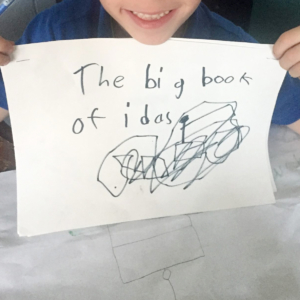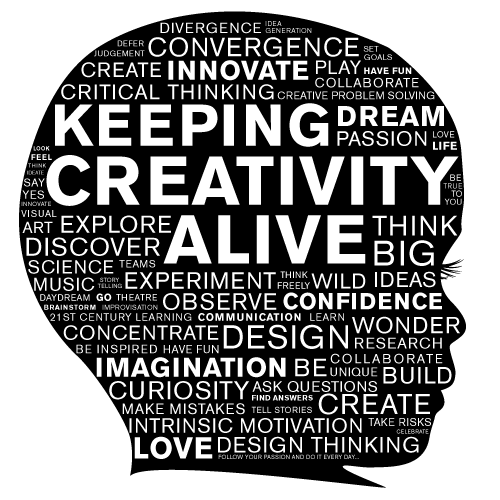Introducing… The ‘Book of Ideas’ Project!

The ‘Book of Ideas’ Project gives kids an outlet for their ideas, encourages new thinking and establishes a meaningful creative practice for kids.
What exactly is a ‘Book of Ideas’?
A ‘Book of Ideas’ is a way for children to express their interests, curiosities and explorations of any topic of their choosing using whatever materials they would like.
So far we have seen Idea Books with story ideas for the goal of publication, song writing ideas for piano playing, a journal capturing trip events, drawing books, comic books and even a book on how to get ideas!
An Idea Book can be about anything! Science experiment documentation, song lyrics, outlines for a play, stories… etc.
There are no rules only 3 single guidelines:
- Write and/or draw your ideas.
- No idea is too crazy.
- Have fun!
In fact, it doesn’t even need to be a book! These boys decided to use large poser paper to write the backstory to their play using Post-It notes to hide secret messages!

What inspired The ‘Book of Ideas’ Project?
This project was inspired by a series of events that happened within a couple of days of one another while also researching the work of Internationally renowned expert in the area of Talent Development, Sally M. Reis.
First, a bit about the first even that inspired this project! About a week ago I saw this post on my Facebook feed…

… with the following caption:
“What did you do at school today?”
“Well Mom, I decided to create a big book of my ideas. As I come up with new ideas, I am going to write about them and add them to my book”.
This seriously warmed my heart! I though about this that entire day… I wondered…
“What if all children got into the habit of recording their interests? Hmm…”
Then, the very next day another friend posted this link to Facebook: How to raise kids to be creative thinkers, with the following caption:
“Your job as a parent is not to say, ‘Tell me what you want to be when you grow up.’ Instead, be aware of what they gravitate to, and encourage them to do more of it. Pay attention to what sparks them.”
I watched the video and was further inspired by the notion of truly observing your child’s interests and supporting them. In her video and in the TED.com interview, Jane Andraka was asked to talk about why she encouraged her sons to keep “idea books”:
It was all Luke’s fault. He generated so many ideas that he was making himself anxious. Was he ever going to be able to accomplish these ideas? Was he even going to be able to remember all these ideas? And I said, “Here’s a dollar journal. Why don’t you just start writing.” He would sketch and then go, “But I don’t know how to do that.” And I’d say, “That’s fine. Get the idea down and then, as you learn more, you can reflect back.”
All the while, I have been researching the work of Sally Reis and reading her book (written with Joseph Renzulli and Andrea Thompson), called Light Up Your Child’s Mind: Finding a Unique Pathway to Happiness and Success. A book about cultivating the unique talents and strengths of every child.

Strategies for developing your child’s gifts and talents are provided in the book. One strategy that stood out to me was putting together ‘Progress Portfolios’: a simple system to record achievements, tangible proof that something is happening and progress is actually being made. They call this the Total Talent Portfolio, a living breathing collection that takes shape gradually. They also discuss an at-home adaption where the focus is on creative learning projects that the child has embarked on and is interested in continuing to investigate! The parent is referred to as the ‘guide-on-the-side’ to help support and assist their child in this discovery progress. It’s a beautiful thing, really.
Why keep a ‘Book of Ideas’?
A ‘Book of Ideas’ is:
- an outlet for ideas
- encouraged NEW thinking
- establishes an idea system creativity practice
Plus:
- It’s fun!
- It allows parents a glimpse into the minds of their children, including curiosities and interests. What are they passionate about? What sparks them?
- It provides kids record keeping of their questions and ideas for further investigation.
- It allows you to monitor your child’s progress and your child to monitor their own progress.
We hope you’ll join us by encouraging the little people in your life to keep a Book of Ideas! For more information and to see the celebration o idea books shared, visit our ‘Book of Ideas’ Project page!







